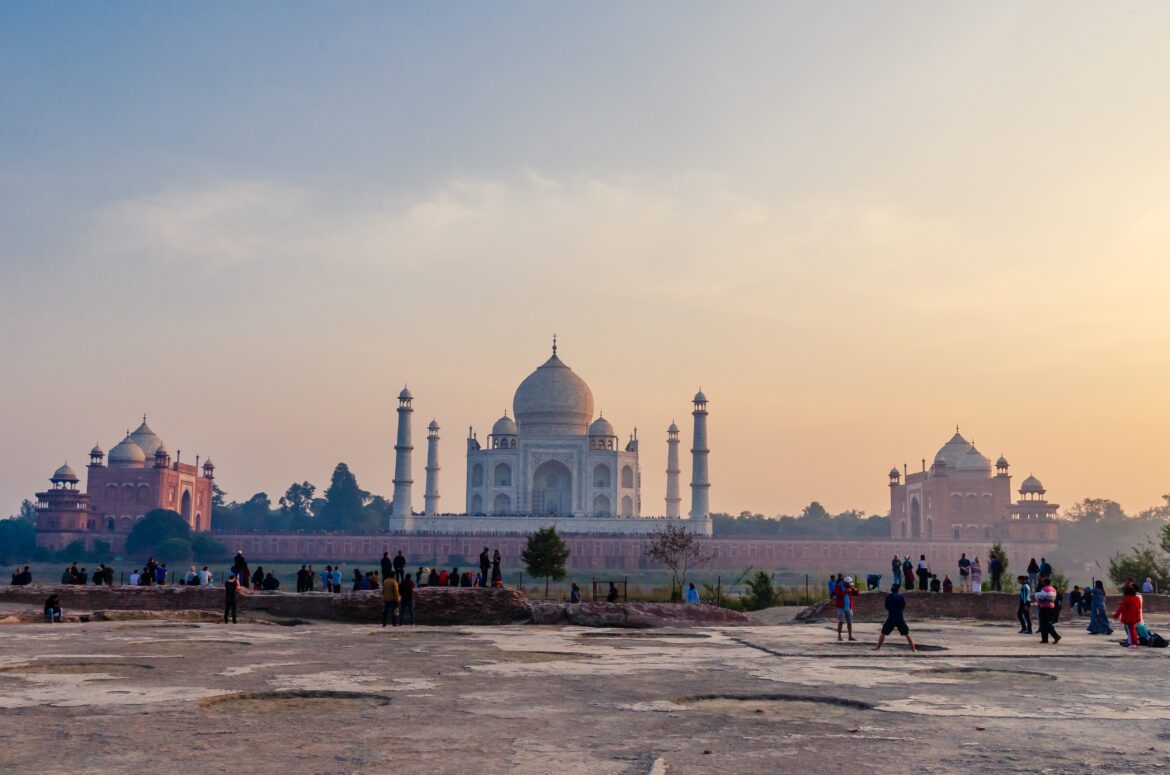The majestic Taj Mahal and the massive fort contribute to Agra’s continued grandeur, which served as the Mughals’ capital of India. Agra is the third point in the “Golden Triangle,” the busiest tourist route in India, along with Delhi, located 204 kilometers to the northwest, and Jaipur in Rajasthan. Agra can be visited in a day from Delhi, although the Taj alone merits much more time because a short visit would miss the intricacies of its numerous moods as the light changes from sunrise to sunset. In contrast, other attractions like Fatehpur Sikri can easily occupy several days.

Places to visit in this region
Along the banks of the Yamuna River, which forms the city’s eastern boundary, are lined up most of its significant Mughal structures, including the Taj Mahal. They were built during the second Mughal era, during the reigns of Akbar, Jahangir, and Shah Jahan, and they serve as an example of the continuous luxury that, by the time Shah Jahan lived, had already started to strain the empire coffers, and sow the seeds of political and military downfall.
Where to live in Agra
Most tourists on a tight budget arrive in Taj Ganj, the maze of winding streets directly south of the Taj. Although check-out is typically at 10 am, the little guesthouses here can be fantastic locations to stay with their unmatched rooftop views and laid-back cafés. Along Fatehabad Rd, southwest of Taj Ganj, there are more contemporary and upscale lodges, while the shadier Cantonment district and the nearby Sadar Bazaar have accommodations for every price range.
Dining Options in Agra
Mughlai cuisine originated in Agra. Mughlai cuisine is well known for its creamy cream- and curd-based sauces served with naan and tandoori bread cooked in earthen ovens, pulao rice dishes, and milky desserts like kheer. Numerous filthy tiny traveler’s cafés can be found across Taj Ganj, but their sanitation standards are frequently questionable, their food is typically uninspired, and their service is typically poor. The rooftop cafés that are topmost of the buildings in Taj Ganj, many of which have beautiful Taj vistas, are the area’s savior. Petha (crystallized pumpkin), a local delicacy in Agra, is one of the city’s best-known products. It is sold at several locations across the city. Still, it is trendy in the row of petha stores in Kinari Bazaar on the northeast of the Jama Masjid (past Chimman Lal Puri Wale).
Market in Agra
Agra is well known for its marble table tops, vases, and trays with semi-precious stones inlaid in elaborate floral patterns that resemble those found in the Taj Mahal. The shoe industry in Agra serves all of India, and its tanneries export purses, briefcases, and jackets, making it a great spot to buy leather. Additionally produced are carpets and dhurries, and traditional needlework is still thriving. Brightly colored zari and zardozi, with the latter creating three-dimensional designs with strange motifs, contrast with more delicate overlay techniques used in chikan. Kinari Bazaar and Sadar Bazaar are fascinating places to shop or browse but be ready to haggle; tourist traps are best avoided. Many independent businesses attempt to pass for government-run “cottage” or “handlooms” shops, which is a sign of their deception.
Shows in Agra
Every evening after sunset, a sound-and-light performance is presented in front of the Diwan-i-Am at the Agra Fort (in English, at 7 pm in the winter and 8.15 or 8.30 pm in the summer). A narrator takes you through the history of the great Mughals for the hour-long performance, with lights playing on various fort features. It’s enjoyable but nothing extraordinary. At the gate, tickets are available.

